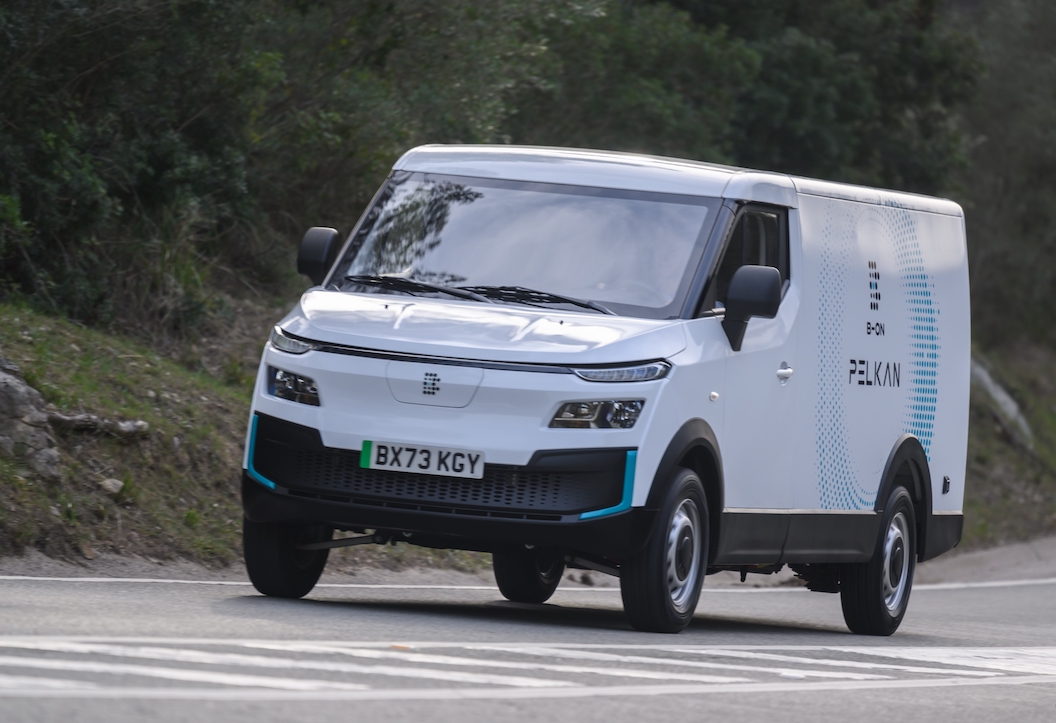Range, Battery and Charging
Due to be launched in 2025, the Pelkan has two battery sizes options available. That means there’s a Pelkan 43 with a 43kWh battery, and a Pelkan 54 with a 54kWh battery. B-On says this will result in claimed ranges of up to 226km (141 miles) and 279km (173 miles) respectively. For a small battery with a similar size profile to the Maxus eDeliver 3, which has either 35kWh or 52.5kWh batteries and maximum range of 151 miles, the Pelkan is doing well to get more mileage from its power packs.
Charging speeds are said to be up to 100kW, twice the speed of the Maxus, but B-On quotes a time of 35 minutes for a charge from 30% to 80% using a 60kW supply, which suggests that 100kW is really a peak rather than a speed which can be sustained for long.
Practicality, Payload and Dimensions
Payload will depend on which model you go for and the weight of the batteries but there’s actually very little difference in the two models, with the smaller battery giving a payload of 1,350kg while the bigger battery reduces overall payload to 1,300kg. That's very competitive, with rivals such as the Citroen e-Dispatch managing 924 to 1001kg. This is thanks to the Pelkan's lightweight aluminium body, which is currently only available in one size giving a load volume of 7.1m3. That’s slightly larger than the biggest eDeliver 3 which has a 6.3m3 capacity.
Interior, Seating and Technology
If the outside appearance of the Pelkan is off-putting then on the inside it really doesn’t get much better. The materials could certainly do with being improved and a splash of colour wouldn’t go amiss either. Yet, it’s a functional and well-thought out enough place to be. There’s a circular dial on the dashboard for the gear selector button, but the whole the cabin feels dated with cheap switchgear and low-quality plastics.
It’s spacious enough, with a decent range of movement in the driver's seat but the steering wheel is fixed, which hampers your ability to get properly comfortable. Perhaps more disappointing than the lack of any cabin niceties, however is the absence of any safety and ADAS systems beyond the mandatory items like daytime running lights and airbags.
Motors, Performance and Handling
What is lacks in safety systems it should make up for in performance with an 85kW electric motor. But here too the Pelkan feels lacking. Most medium sized vans have at least 100kW, so despite the lightweight construction it feels underpowered for a van of its size, and with a full 1,350kg payload it’s going to feel downright slow. On the plus side it handles fairly well. The steering is a little muted, with little in the way of feedback from a fairly light and overly assisted electrical power steering system. The ride comfort is good though. It feels planted and there’s almost no body roll. You also won’t find any choice of regenerative braking modes and you can forget about any clever driving modes to help improve the range.
Running costs, Pricing and Specs
Priced at around £30,000, the Pelkan is definitely a budget van which comes in at nearly £10k less than serious competitors. Buyers are expected to be in the last-mile delivery sector where its size and carrying capacity can be put to good use. The smallest battery size also won’t pose an issue for their fixed routes and depot charging.
Verdict
The Pelkan lacks sophistication compared to other electric vans but if you’re after big productivity numbers, its large volume and impressive payload could be persuasive.

























